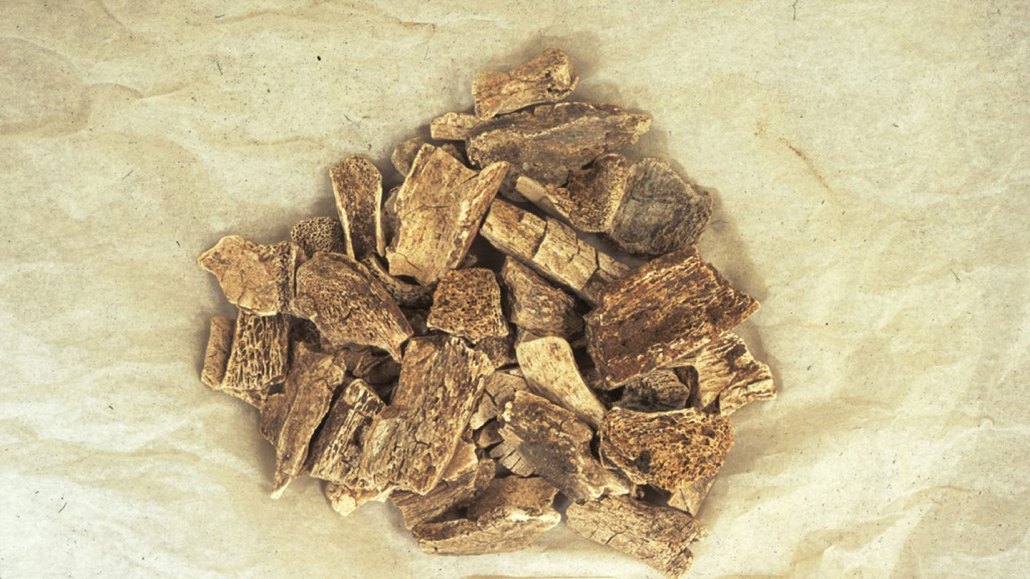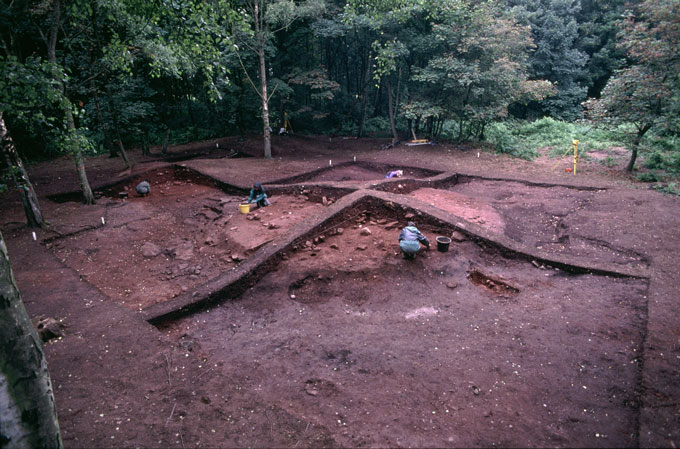Vikings brought animals to England as early as the year 873
Horses and dogs may have been companions of the travelers, researchers say

By analyzing cremated animal and human bones (shown), researchers say they have found the first solid scientific evidence of animals traveling with Vikings across the North Sea to England.
Julian Richards/University of York
Vikings brought horses and dogs to the British Isles from Scandinavia, a new study suggests.
A chemical analysis of bone fragments from a cemetery in England provides the first solid scientific evidence of animals traveling with Vikings across the North Sea, scientists report February 1 in PLOS ONE.
In the 1990s, researchers unearthed the cremated remains of a human adult and child as well as of a dog, horse and probable pig from a burial mound in a Viking cemetery in Derbyshire, England. In previous work, radiocarbon dating of femur, skull and rib fragments revealed that the inhabitants all died sometime between the eighth and 10th centuries. That date was narrowed down to the year 873, thanks to the ninth-century Anglo-Saxon Chronicle, which records that a Viking army wintered near the site that year.

Where the animals came from has been a mystery. Norse raiders are known to have stolen horses from people in England around the time. And researchers have generally thought that Viking boats at the time were too small to allow for much transport of animals from Scandinavia to the British Isles. One entry in the Anglo-Saxon Chronicle describes Vikings moving from France to England along with their horses in the year 892, but no physical evidence of such activity had been found before.
In the new work, Tessi Löffelmann and colleagues turned to certain forms, or isotopes, of strontium to unravel the individuals’ provenance. The element accumulates in bones over time through diet, leaving a distinct signature of where an individual has lived (SN: 4/2/19).
Strontium ratios in the child’s remains matched those of shrubs growing at the burial site, suggesting the child spent most, if not all, of its life in England. The ratios of the adult and three animals, on the other hand, differed substantially from the local fauna, the team found. That suggests the individuals hadn’t spent much time in the country before they died. Instead, their ratios were similar to ones found in the Baltic Shield region in Norway, central and northern Sweden and Finland, suggesting a Scandinavian origin.
“One of the joys of isotope analysis is that you are able to really pinpoint things that previously we could discuss endlessly,” says Marianne Moen, an archeologist at the University of Oslo who was not involved in the study. Using strontium to analyze more cremated remains, which can elude common forms of isotope analysis including carbon and nitrogen, “is the next logical chapter for understanding prehistoric mobility.”
Isotope analysis helped reveal where these individuals lived and when they died, but it couldn’t answer why the dog, horse and pig made the journey to England in the first place. That’s where historical records can help, says Löffelmann, of Durham University in England and Vrije Universiteit Brussel in Belgium.
For Löffelmann, the small sizes of early Norse ships combined with the fact that the animals and people were buried together suggest Vikings may have initially brought animals with them for companionship, not just function.
“It could have only been selected animals that made that journey,” she says. “They were important to what the person was.… They went through life together, and now they’re going through death.”







